The 8 Best Indoor Plants for Mental Health, Say Wellness Experts
Updated: Jul. 31, 2023
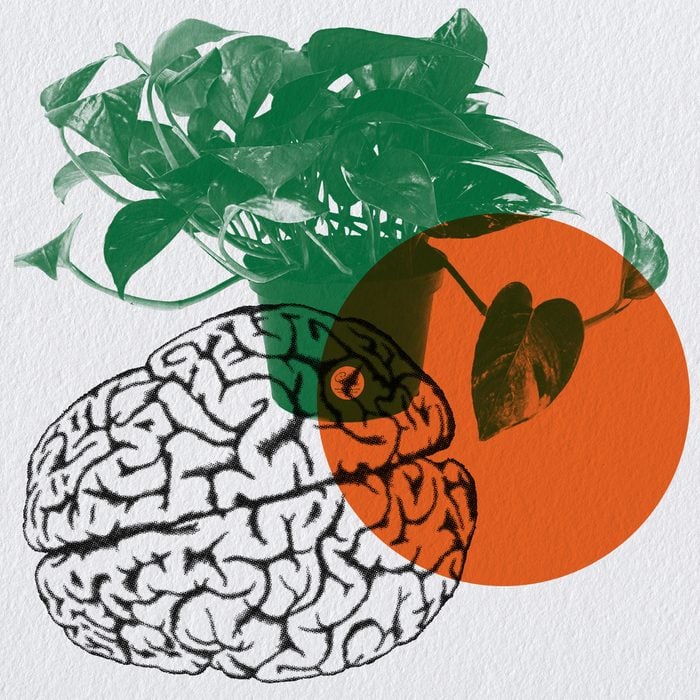
Science shows our plants take care of us, too.
There are some major reasons gardening and houseplant collections have become such popular social media trends. With so much worry in the world these past few years, Jamie Keaton Jones, LICSW, PhD—a psychotherapist and adjunct professor in Washington, DC—says for many people, tending to plants has surfaced as a hobby that’s enabled many individuals to focus their attention on something positive, while experiencing greater comfort and beauty from the company of a living being inside their spaces. “Plants and exposure to greenery have been found to have multiple mental health benefits, such as lowering stress, decreasing feelings of depression, increasing sociability, restoring focus, improving cognitive performance, improving mood, and increasing self-esteem,” Jones tells The Healthy @Reader’s Digest.
I Tried It: A Rage Room “Felt Amazing” for Dealing with Pandemic Wedding Stress
The mental health benefits of interacting with plants
Research has shown there are many benefits to being in the presence of nature, whether that’s in a forest, having a small garden, or keeping a few household plants. “One study showed that patients at a hospital who had plants in their room reported less pain, lower blood pressure, less fatigue, and less anxiety than patients without plants in their rooms,” says Dr. Jenny Seham, PhD, Attending Psychologist, Director, Empowerment Series Garden, AIM (Arts and Integrated Medicine) Montefiore Health Systems in the Bronx, NY. How is this? She explains: “Cortisol, the stress hormone, has been shown to lower with plant interaction, lowering fatigue, irritability, and blood pressure,” adding: “Gardening and care for plants can help people turn people away from negative thoughts or emotions.”
Adds Gayle Weill, LCSW, a social worker in New York and Connecticut: “Studies have shown that plants and gardening aid in decreasing symptoms of anxiety and depression, while increasing productivity and serotonin levels, the neurotransmitter responsible for uplifting mood.”
14 Things Healthy, Happy People Do on Their Lunch Breaks
A way to stay grounded
Our lives are busy and largely sedentary, with a lot of time spent behind screens. Weill suggests raising plants can be an opportunity to practice true presence in the here-and-now, focusing on something pleasant and worthwhile as it’s right under your nose. “Rather than dwelling on the past or worrying about the future, [plant care] helps one focus on the present moment and provides a feeling of accomplishment,” she says.
Tyler Keith, LCSW, a social worker specializing in stress, coping issues and behavioral issues in Wilmington, NC (who also identifies as an avid gardener) refers to this process as “grounding.” He explains: “Grounding is a mental health practice and spiritual practice that supports individuals’ senses of connectedness; a feeling of purpose, direction, or a place in the world . . . whether [you’re] talking about growing a garden, tending to a single potted plant, or admiring trees both indoor or outdoors.”
Keith adds that when we experience grounding, changes happen in our bodies. “Our heart rate slows down when we are grounded, our breathing becomes more full,” he says. “Muscles can relax as they become more oxygenated.”
A Psychologist Says This Trending Way to Handle Anger May Actually Be Good for Your Heart
How plants help us connect
“I’ve seen the positive effects of community gardening on mood, motivation, energy, socialization, knowledge, collaboration, creativity, and self-confidence,” notes Dr. Seham. “These experiences can support empathy, increased community engagement, and a desire to support others. Plants can help people relax and feel calm, while stimulating creativity with the potential to engage multiple senses, sight, smell, [and] touch,” she says. “Activities like watering and tending to plants, responding to sunlight, recognizing what plants and humans need to thrive can be meaningful experiences.”
Keith adds one note before you fill your online shopping cart full of plants or run to the nearest nursery—while plants can definitely be helpful, they’re one part of a holistic wellness routine. “Gardening and plant care aren’t a cure-all,” he says. “Having a plant does not immediately or directly impact mental health processes. It is simply a piece of the puzzle that some can benefit from in exercising mental health maintenance that exposes individuals to positive thoughts and feelings.”
So, how many plants do you need?
If you’re wondering just how many plants you need to reap the benefits, Jones says it’s not about how many plants you have, but rather “about your interaction with the plant.” She poses the questions: “For example, is it placed where you frequently see it? Is it thriving?”
If you have a small space or aren’t sure you’re ready to be a full-on plant parent, starting out with a ton of plants could become overwhelming. Dr. Seham shares that in her experience, “Just one plant can make a difference; it can engage you by its smell or color that creates a positive mood response with every interaction.”
Be prepared for a learning curve
Like with any new skill or hobby, taking care of houseplants or growing a garden comes with a learning curve. Give yourself a little grace. “We aren’t supposed to be good at everything right away,” Keith says. “It takes time, energy, and investment to learn what plants need, such as sunlight, soil preferences, moisture levels, and proper potting methods!”
Allow yourself some time to learn the basics, be patient, and leave room for a little trial and error. Dr. Seham advises: “Start with one plant, and make the maintenance part of your daily routine, like making coffee or brushing your teeth.”
Chia-Ming Ro, garden consultant and owner of Coastal Homestead in Los Angeles, compares caring for plants to dating. “You’ve picked up some new plants, but you really don’t know much about them. In the coming weeks you learn more about them, get to know them, and how to treat them,” she says. “Sometimes it works out great because your ability to adapt to their needs align, while some plants don’t work out because you haven’t figured out how to make them happy. Or, some are simply too high maintenance!”
So with all that, what do these experts recommend as the best plant picks for bringing more harmony into your home? Here’s what they propose are the eight best plants for your mental health.
Snake plant
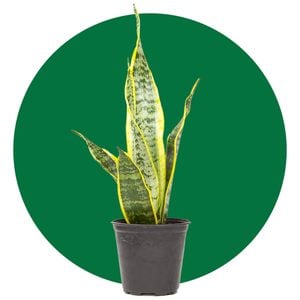
If you’re new to plant parenthood, starting off with an easy, no frills plant is best. (Read: One that will survive, even if you sometimes forget to water it.)
Sword-shaped with dark green leaves and often mustard-yellow or white stripes make the snake plant stand out. “The snake plant, also known as ‘mother-in-law’s-tongue,’ is a great first plant,” says Jones. ”It’s very easy to care for, thrives in spaces with low sunlight, has visual appeal, and filters the air.”
Adds Keith: “Snake plants are patient with new gardeners as they are not quick to cook in the sun and die, and they are drought resistant if you forget to water them. These plants are great for building your confidence in your plant-care skills.”
Spider plants
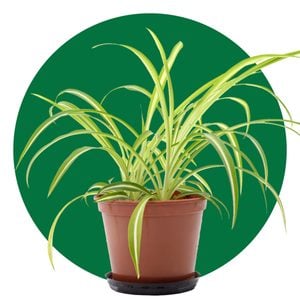
Spider plants, with light-green foliage with plenty of leaves, are another low-maintenance selection. “They do well with humidity, and actually can handle varying forms of light, but do best with medium light,” says Keith. “Sometimes individuals will put spider plants in their bathroom to have a warmer, cozier feeling in the space that helps a relaxing bath feel that much more relaxing,” he explains.
When a spider plant thrives, it will grow new offshoots that can be snipped and potted as a new plant. “Spider plants are a wonderful plant that you can gift plants to friends at no cost to yourself,” Keith offers. If you want a plant that acts like a gift that keeps on giving, this is one to choose!
Aloe Vera
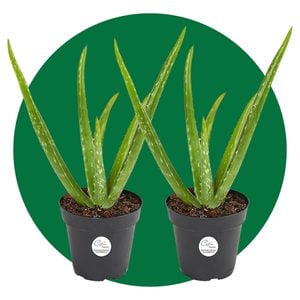
Drought-resistant and easy to grow, Aloe Vera can be a novice plant owner’s dream because they’re forgivable and adaptable. “Aloe Vera is low-maintenance–you can just water it monthly, and it produces a healing gel that you can use straight from the leaf,” says Seham.
Keith adds, “I also recommend having an aloe in the home as it helps detox the airspace and is helpful for burns, cuts, and scrapes to help injuries heal faster or soothe pain.” That goes for sunburn, too.
Pothos
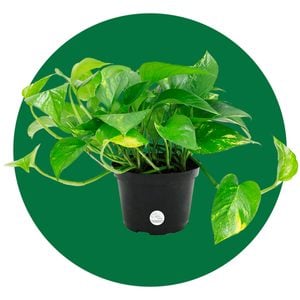
Pothos have chartreuse oval heart-shaped, waxy leaves and are adaptable plants. “They can exist in a lot of different ways as they grow long vines that can trail [or] hang from a pot and grow downwards, or they can climb [and] be supported with a trellis to grow upwards,” says Keith.
Jones also likes the Pothos plant because “they are also easy to care for, filter the air, and look beautiful cascading down a bookcase or shelf.”
Keith recommends this plant if you want to have a planting hobby without spending much money—that’s because Pothos are easy to propagate. (“Propagation” is gardener-speak to mean you can take clippings of the plant and grow a new plant.)
Lavender
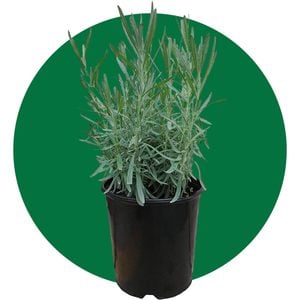
Lavender is a beautiful herb that attracts plenty of pollinators, such as bees and butterflies. And, well-known for its relaxing scent, lavender “has a calming effect, aids in reducing stress, promotes sleep, and has anti-inflammatory properties when used as a topical for skin,” says Weill.
This means it’s great both in the garden, or clipped and dried in a bowl inside your space (or even sprinkled in your bathtub).
I Started Using Lavender for Stress Relief and Here’s What Happened
Basil
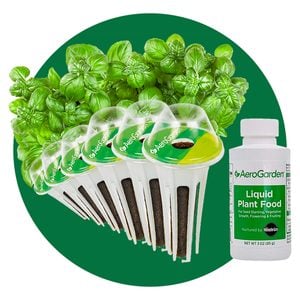
“The experience of growing, picking, and using herbs from your own garden has a positive impact on your mental health, creating positive sensory experiences as well as a sense of accomplishment,” says Dr. Seham.
Basil is a summertime herb that loves the sun (it’s also a staple ingredient for a yummy homemade Margherita pizza, or pesto). Not only is it delicious in meals, but eating basil has health benefits, too, says Weill. “It has properties which help to relieve stress and anxiety. The leaves are used for many purposes and act as an adaptogen, which is a natural substance considered to help the body adapt to stress. Having it can improve mental clarity,” she adds.
Lemon balm
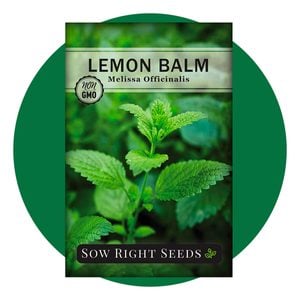
This fragrant green herb is part of the mint family and is simple to cultivate. “Known for its calming properties, it has a light lemony scent that can be wonderfully intensified by rubbing the leaves between your fingers,” says Dr. Seham. “It has been used to improve sleep, reduce stress and anxiety, improve appetite, and help with indigestion.” She adds that lemon balm is common as a tea and is also used in beauty products, such as lotions.
Herbs are versatile and liven up the area where they are grown. “You can use [herbs] to freshen up a room, in a bouquet, in tea, and of course in your next meal,” says Ro. “Herbs don’t require a lot and can be grown in a pot by a sunny window (four to six hours of sun ideally) or anywhere outdoors.”
Spearmint
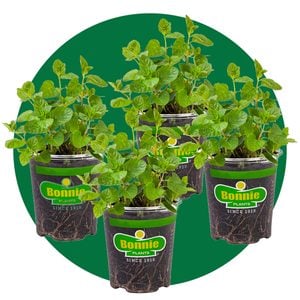
Spearmint is a hardy herb, grows quickly, and is part of the mint family. “It is great to just smell the leaves, without even needing to make a tea, for an immediate soothing effect,” Dr. Seham says.
Sign up for The Healthy @Reader’s Digest newsletter for answers and insights from a team of experts who get how you live. Follow us on Facebook and Instagram, and keep reading:
- 13 Best Walking Shoes for Foot Health, from Podiatrists
- An Allergist Says Seasonal Allergies Really Are Worse Than Ever This Year—Here’s Why
- Brooke Shields Exclusive: Her 4 Wellness Must-Haves and the “Extraordinary” Privilege of Aging
- The 4 Best Vitamin D Supplements Depending on Your Specific Needs, from Registered Dietitians
- The 10 Best Health Books of 2022: Therapists and Readers Rate the Bestselling Wellness Books So Far This Year
